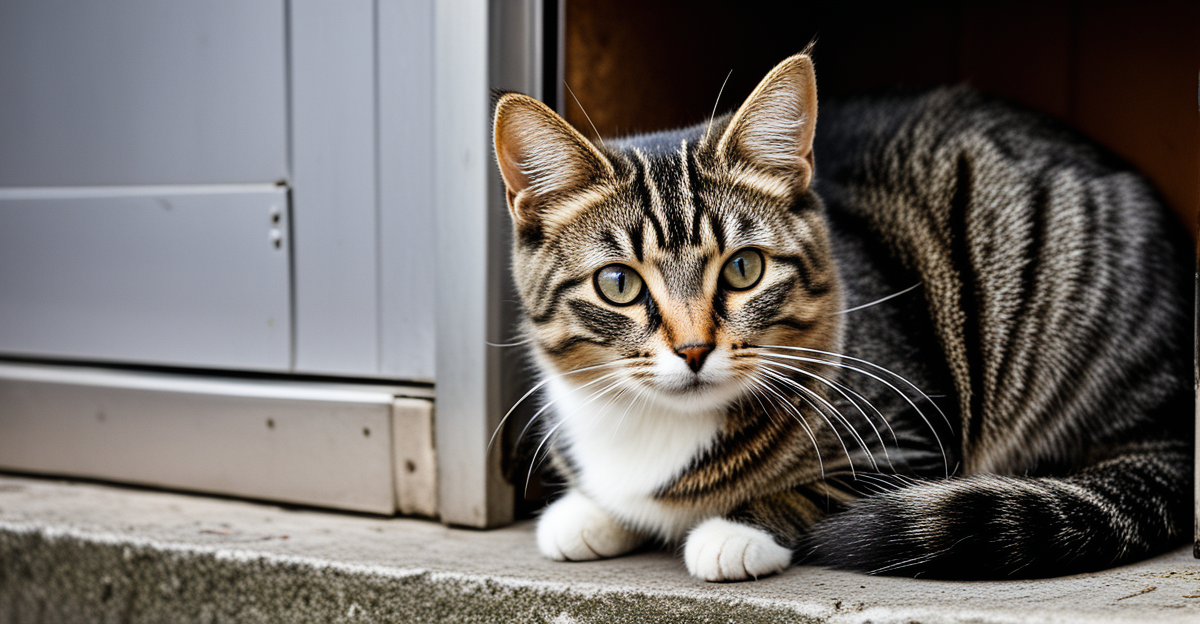Assessing Your Rescued Cat’s Needs
Understanding the specific needs of your rescued cat is crucial for their well-being and your peace of mind. Start by evaluating the cat’s physical condition. This step involves an “initial health check” which entails observing for visible signs of stress, injury, or illnesses. Look at their coat condition, check for any limping, and notice how they move around. This process will guide any immediate medical attention required.
Having insight into your cat’s previous environment and behavior also plays a vital role. Does the cat display hiding behaviors or aggression? Such actions can indicate possible anxiety or past trauma. Determining their former conditions, whether they came from a street, shelter, or different home, helps tailor their care to suit their past experiences.
Avez-vous vu cela : Creating a Stress-Free Dining Space: Top Expert Tips for Cats with Social Eating Anxiety
Lastly, uncover signs of extreme stress or trauma that might need attention. Cats display discomfort through changes in appetite, excessive grooming, or withdrawal from social interactions. Recognizing these signs early allows you to address any trauma with appropriate support, fostering a safe and accepting environment. This comprehensive understanding goes a long way in ensuring a smoother transition for your new fuzzy friend.
Creating a Welcoming Home Space
Introducing a rescued cat to a new home requires careful preparation to alleviate stress. Begin by designating a quiet space where the cat can acclimate at its own pace. This area should be free from high-traffic and noise, allowing your furry friend to feel secure.
A lire aussi : Creating an Adventurous and Secure Sensory Paradise for Visually Impaired Cats to Explore the Outdoors
Incorporate cat furniture like scratching posts or perches to provide a sense of ownership and comfort. These furnishings encourage natural behaviors, enhancing both physical and mental well-being. Organize litter boxes and feeding areas deliberately, ensuring easy access and cleanliness. It’s important for these essential stations to be established early on to promote a sense of routine and security.
Furthermore, implement cat-proofing measures to prevent accidents. Secure loose electrical wires, block off restricted zones, and remove harmful plants. These precautions shield your cat from potential dangers and minimize stressors.
By thoughtfully arranging your home with your new cat in mind, you lay the groundwork for a peaceful transition. This approach fosters a nurturing environment that supports the emotional and physical needs of your newly adopted feline, helping it feel welcomed and loved from day one.
Establishing Routines for Stability
Creating a stable routine plays a foundational role in ensuring your rescued cat feels secure. Start by implementing a consistent feeding schedule. This not only meets their nutritional needs but also establishes predictability in their day, reducing anxiety.
Next, incorporate regular playtime and enrichment activities. These sessions build trust and offer vital mental and physical stimulation. Use toys that encourage natural hunting instincts or interactive play to engage them positively. Cats, by nature, thrive on routine, and offering structured periods of fun strengthens your bond and their confidence.
Introduce a structured daily routine to provide comfort and security. Morning feedings, evening play sessions, and quiet times should become part of the daily rhythm. This helps the cat understand what to expect, fostering a sense of safety and belonging.
By fostering consistency in nourishment and interactive engagement, you create an environment where your cat feels stable and understood. These practices not only guide their behaviours but also nurture a robust and trusting relationship with your new feline companion.
Addressing Behavioral Issues
Understanding cat behavior problems is key in managing a rescued cat effectively. Rescue cats often display unique behaviors, such as hiding or aggression, influenced by their prior experiences. Identifying these common signs is crucial. If your cat is showing undue fear or aggression, it might be dealing with cat anxiety, a prevalent condition in rescued animals.
For mild behavior issues, consider using positive reinforcement training techniques. This method builds trust and encourages desirable behavior. For example, reward your cat with treats or gentle affection when it exhibits calm or friendly behaviors. This reinforcement helps modify unwanted actions over time, improving the relationship between you and your cat.
However, if severe behavioral problems persist, it might be necessary to seek professional help. Animal behaviorists can provide detailed analyses and offer tailored solutions specific to your cat’s needs. They can develop strategies to manage complex issues effectively. Always remember, each cat is unique, and professional guidance can be pivotal in ensuring both you and your cat thrive in a harmonious home environment.
Ensuring Health and Safety
Focusing on your rescued cat’s health and safety is paramount. Schedule a vet check-up promptly to ensure vaccinations are up to date. This visit confirms that your cat receives essential shots like rabies and distemper, which protect against common diseases. Discuss preventive care options such as spaying/neutering and flea control, reducing the likelihood of future health issues.
Maintaining a safe indoor environment is equally vital. Remove potential hazards like toxic plants, loose wires, or small objects that could be ingested. A hazard-free home contributes significantly to your cat’s well-being and minimizes risks.
Moreover, consider the need for routine grooming and dental care as part of ongoing health maintenance. Regular brushing keeps their coat healthy, while dental hygiene prevents oral diseases. By implementing these health and safety measures, you ensure a robust foundation for your cat’s prosperous future. Remember, proactive care is key to a happy, healthy life together with your feline friend.
Socialization Tips for Your New Cat
Cat socialization is imperative for introducing cats to people and building their confidence in a new environment. Start by allowing the cat to adjust at its own pace. Place them in a room where they can observe family activities without feeling overwhelmed. Gradually introduce different family members and pets by letting them approach the cat calmly and offering treats to associate these experiences positively.
Use gradual exposure techniques to diminish any fear and anxiety. Begin with short interactions, slowly increasing the duration as the cat becomes more comfortable. If the cat shows signs of stress, allow it time to retreat and reassure it with gentle voices or comforting objects such as soft blankets.
Provide regular opportunities for positive social interactions and take constant note of behaviors to encourage trust. Use toys and interactive games that involve both people and pets, reinforcing a sense of belonging and security. This method not only reduces isolation but also creates strong bonds with family members. By encouraging respectful and enjoyable encounters, you cultivate an environment where your cat feels understood and valued, promoting lasting companionship.
Diet and Nutrition for Your Rescued Cat
Providing appropriate nutrition is essential for your rescued cat’s health and well-being. Selecting high-quality cat food tailored to your cat’s age, health status, and activity level is crucial. Premium brands often ensure balanced nutrition and may contribute to better coat appearance, energy levels, and overall health. To aid feeding rescued cats, consult your vet for personalized recommendations.
When transitioning your rescued cat to a new diet, adopt a gradual approach. This minimizes the risk of gastrointestinal upset, including vomiting or diarrhea. Introduce the new cat food by gradually increasing the new food’s ratio while decreasing the old over a week. Keep a close eye on your cat’s response, as sudden changes can provoke stomach distress.
Regularly monitoring your cat’s weight is vital. Assessing weight gain or loss will guide portion adjustments to maintain a healthy weight. Adjust food portions based on your cat’s growth and lifestyle changes. Underfeeding or overfeeding can lead to health concerns, so balanced portions are key. By ensuring diligent oversight of your cat’s diet, you foster a robust and vibrant feline companion.
Resources for Ongoing Support
Connecting new cat owners with cat care resources can be pivotal in providing long-term support. Local shelters often have vital information and resources, including advice on nutrition and behaviour. They might also offer workshops or support groups for new cat owners to share experiences and advice. A vet remains one of the most valuable resources for ongoing care, offering guidance tailored to your cat’s unique needs and ensuring vaccinations are up to date.
Discover online cat care resources that deliver valuable insights into managing your rescued cat’s needs. Websites often contain articles, forums, and expert opinions on everything from diet management to behaviour modification.
Engaging with local pet owner communities can provide a support network and encouragement. It creates opportunities to share challenges and triumphs with others who are familiar with the nuances of welcoming a rescued cat into a home.
Whether opting for in-person advice from professionals or online communities, these resources provide grounding knowledge and continual support. By utilizing these tools, you can ensure a thriving relationship with your new feline companion while fostering a community of informed and compassionate cat owners.









